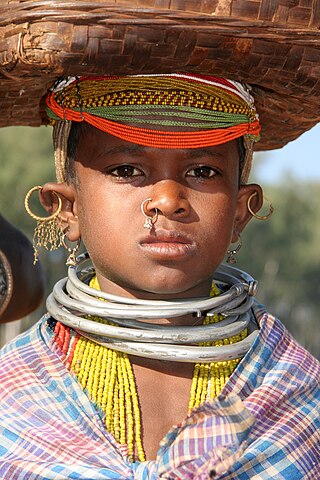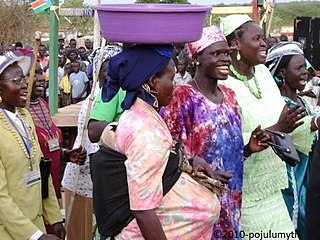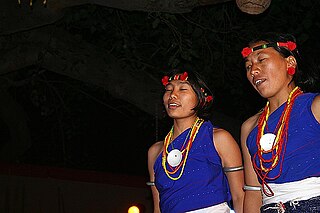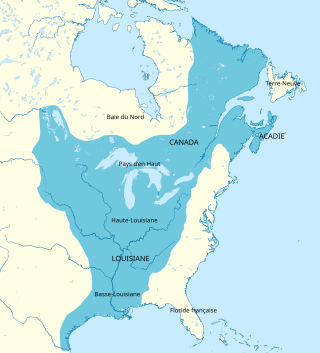
The Himba are an indigenous people with an estimated population of about 50,000 people living in northern Namibia, in the Kunene Region and on the other side of the Kunene River in southern Angola. There are also a few groups left of the OvaTwa, who the OvaHimba consider to be part of their tribe, but are hunter-gatherers. Culturally distinguishable from the Herero people, the OvaHimba are a semi-nomadic, pastoralist people and speak OtjiHimba, a variety of Herero, which belongs to the Bantu family within Niger–Congo. The OvaHimba are semi-nomadic as they have base homesteads where crops are cultivated, but may have to move within the year depending on rainfall and where there is access to water.

The Adhola people, also known as Jopadhola, are a Nilotic ethnic group of Luo peoples that live in Tororo District of Eastern Uganda and comprise about eight percent of the country's total population. They speak Dhopadhola,, which belongs to the Western Nilotic branch of the Nilotic language family. They are primarily pastoralists. The Jopadhola call their land Padhola which, according to historian Bethwell Ogot, is an elliptic form of "Pa Adhola" meaning the "place of Adhola", the founding father of the Jopadhola people. Officially, land of the Adhola is called Padhola, but the Baganda who misinterpret 'Widoma' – a Dhopadhola word for 'war cry' meaning 'You are in trouble' refer to the Jopadhola as "Badama". The social structure of the Jopadhola can be described as semi centralised because there is no traditional centralized government and its organization is limited to a clan called Nono. There are over 52 clans, each with cultural practices, common ancestry and a distinct lineage.

The Luhya are a Bantu people and the second largest ethnic group in Kenya. The Luhya belong to the larger linguistic stock known as the Bantu. The Luhya are located in western Kenya and Uganda. They are divided into 20 culturally and linguistically united clans. Once known as the Kavirondo, multiple small tribes in North Nyanza came together under the new name Baluhya between 1950 and 1960. The Bukusu are the largest Luhya subtribe and account for almost 50% of the entire Luhya population, dominating other Luhya subtribes. They live in both Bungoma and Trans-Nzoia counties.

The Bukusu people are one of the 17 Kenyan tribes of the Luhya Bantu people of East Africa residing mainly in the counties of Bungoma and Trans Nzoia. They are the largest tribe of the Luhya nation, with 1,188,963 identifying as Bukusu in the 2019 Kenyan census. They speak the Bukusu dialect.

The Ik people are an ethnic group or tribe native to northeastern Uganda, near the Kenyan border. Primarily subsistence farmers, most Ik live in small clan villages, or odoks, in the area surrounding Mount Morungole in the Kaabong district. Their population is estimated between 10,000 and 15,000.

The Kumam people are a Nilotic ethnic group of about 349,000 living mainly in the western areas of Teso sub-region and the south-east of Lango sub-region. The Kumam are an ethnic group of people found in Kaberamaido district, district in Eastern Uganda. They share Soroti district with the Iteso and some parts of formerly Lira district with the Langi. In the Lango region, they are now found in Dokolo district which was detached from Lira District. They are found at the shores of Lake Kyoga (Namasale). In Soroti district, they are found in Serere, Asuret, Kamuda, katine, Soroti city, Arapai as well as the outskirts of Soroti district neighboring Kaberamaido.

The Gwere people, also called Bagwere, are a Bantu ethnic group in Uganda. They are among the 65 ethnic societies of Uganda. Gwere is the root word, and the people are referred to as Bagwere (endonym) or Mugwere (singular). According to the 2002 Census of Uganda, 23.6% of Bagwere are Roman Catholic, 46.8% are Anglican, 23.9% are Muslim and 3.1% are Pentecostal.

The Bonda are a Munda ethnic group approximately 12,000 who live in the isolated hill regions of the Malkangiri district of southwestern Odisha, India, near the junction of the three states of Odisha, Chhattisgarh, and Andhra Pradesh.
The Ketebo people are an ethnic group in South Sudan. The Ketebo are inhabitants of Bira which is the land of the Ketebo. Bira which was a Ugandan Protectorate until 1925 and was transferred to Sudan's administration in 1926. The Ketebo are sometimes referred to by the Didinga as "Loceha/Loceka". The Ketebo live in Bira, which is one of the Payams of Kidepo County, Torit, Eastern Equatoria State of South Sudan. They are one of the smallest and least known tribes in South Sudan. The Ketebo in Uganda are called Mening, which is also one of the smallest tribes in Uganda. The population of this ethnic group is over 45,000. Bira is the land of the Ketebo which include; Lofus, Madial, Lorum, Lotome, Lojilingare, Arata, Nakoringole, Lonyili, Kamulach, Tulel, Ofi, Natedo, Nahitahapel (Ihapelmoru), Naurkori, Lochorangichokio, Lokudul, Napeyase, Ogeng, Tongoborei, Kalabe (Apoka), Irobi, Narus, Koryang, Tomoodo, Koryang, Losigiria, Irobi just to mention a few. The Ketebo people are also found in Lotukei in Budi County.
The Luvale people, also spelled Lovale, Balovale, Lubale, as well as Lwena or Luena in Angola, are a Bantu ethnic group found in northwestern Zambia and southeastern Angola. They are closely related to the Lunda and Ndembu to the northeast, but they also share cultural similarities to the Kaonde to the east, and to the Chokwe and Luchazi, important groups of eastern Angola.

The Pojulu is a tribe of the savanna lands in the White Nile Valley, in the Equatoria region of South Sudan. They are Nilotic people and part of the Karo people — which also includes Bari, Mundari, Kakwa, Kuku, Nyangwara, and the Karo Tribes Of Omo Valley in Ethiopia such as the Banna, Hamer, Mursi, Kara, Dassanech, Arbore, Nyangatom known as the Omo Karo peoples.

The Konjo, BaKonzo, or Konzo, are a Bantu ethnic group located in the Rwenzori region of Southwest Uganda in districts that include; Kasese, Bundibugyo, Bunyangabu and Ntoroko districts.
Amba is a Bantu ethnic group located on the border area between the DRC and Uganda south of Lake Albert in the northern foothills of the Rwenzori Mountains. On the Uganda side, they are found in Bundibugyo District. On the Congolese side, they are located in the Watalinga and Bawisa subcounties of Beni, South Kivu. Numbering 42,559 on the Uganda side in the 2014 census and 4,500 on the Congolese side according to a 1991 SIL International estimate, Ethnologue lists their total population as 40,100. Agriculturalists, the Baamba traditionally cultivate plantains, millet, maize, sweet potatoes, peanuts, rice, coffee, cotton, and cassava, while raising goats and sheep. The Baamba practice Christianity.

The Dodoth are an ethnic group in north eastern Uganda. They belong to the Karamojong Cluster, which also includes the Karamojong and Jie people. Their language is a dialect of the Karamojong language. Their population is estimated at 129,102.

Samia speaking people live in Western Kenya and Eastern Uganda. They are composed of several clans and their ancient economic activities include fishing in Lake Victoria and other rivers such as River Sio, crop farming (obulimi), and animal farming (obutuki). The Samia speaking people, as widely known by other tribes, predominantly live in Busia districts and speak a dialect similar to the Luhya tribe in Kenya. However, on the Ugandan side there is a slight variation in the dialect spoken by the Samia of Southern Busia on the fringe of Lake Victoria and those of North Busia district closer to Tororo District. The former speak Olusamia while the latter speak Olugwe. The two dialects are difficult to differentiate by non Samia speaking people but easily discernible by the natives. and in Uganda mainly found inbusia and Namayingo district.

The Pochurys are a Naga ethnic group inhabiting the Northeast Indian state of Nagaland. They mostly live in the eastern part of the Phek district, centered at Meluri town.
The Baruuli or Baluuli, are a Bantu ethnic group native to Bunyoro-Kitara, a subnational kingdom within Uganda. They stay in an area called Buruuli. They share a common ancestry with the Banyala.
The Bafumbira, are a Bantu ethnic group from Kisoro District in South Western Uganda. They are of three indigenous groups: Bahutu, Batutsi and Batwa.

Bride price, bride-dowry, bride-wealth, bride service or bride token, is money, property, or other form of wealth paid by a groom or his family to the woman or the family of the woman he will be married to or is just about to marry. Bride dowry is equivalent to dowry paid to the groom in some cultures, or used by the bride to help establish the new household, and dower, which is property settled on the bride herself by the groom at the time of marriage. Some cultures may practice both simultaneously. Many cultures practiced bride dowry prior to existing records.

Correction girls was a term describing women who were forcibly shipped from France to its colonies in America as brides for its colonists during the early 18th century.














